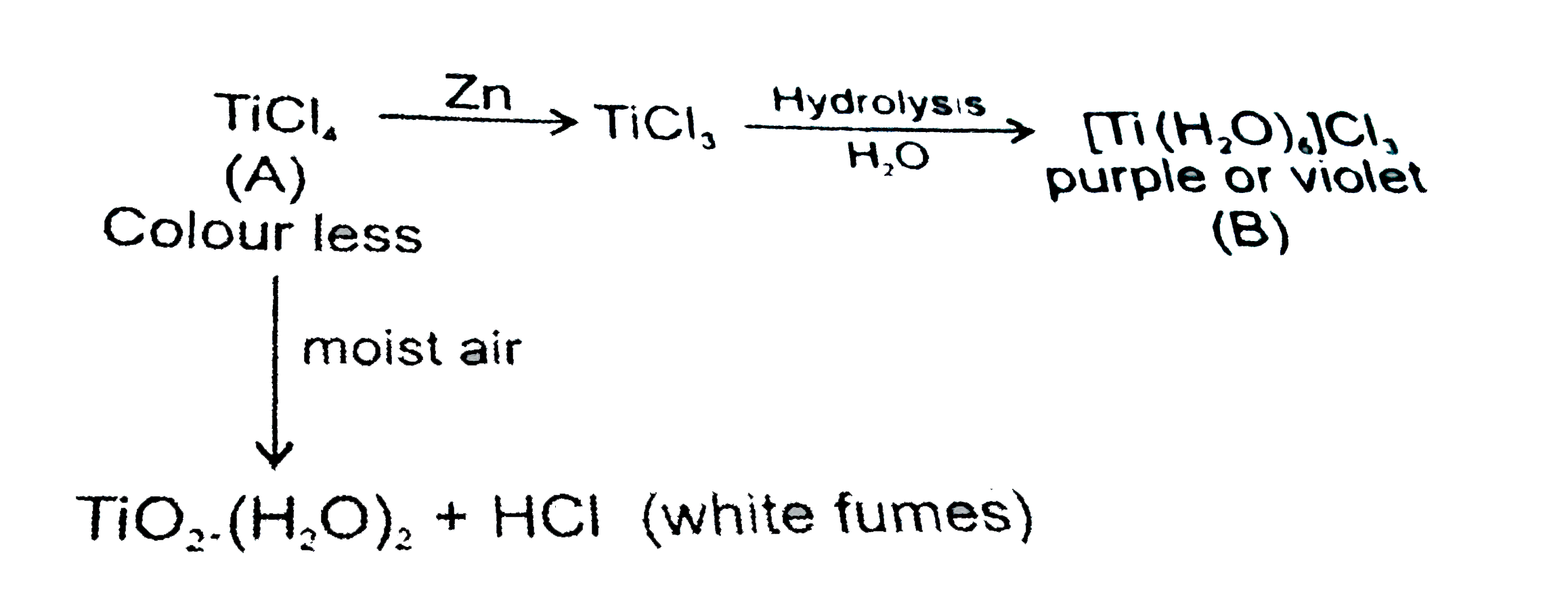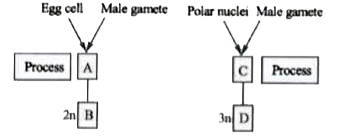
Identify (A),(B) and (C). Also explain colour difference between MCl4 and (B).
Video Solution
Text Solution
(A) is TiCl4 as it has no unparied electron and is liquid at room temperature on account of covalent character because of high polarising power of Ti+4.TiCl4 being covalent gets hydrolysed forming TiO2(H2O)2andHCl
(B) which fumes in air.
In [Ti(H2O)6]Cl3 complex Ti(III) has one unpaired electron (3d1) which gives violet/purple colour due to d-d transition.
 .
.
|
Topper's Solved these Questions
- D & F-BLOCK ELEMENTS & THEIR IMPORTANT COMPOUNDS Book:RESONANCEChapter:D & F-BLOCK ELEMENTS & THEIR IMPORTANT COMPOUNDS Exercise:Additional Problems for Self practice (APSP)
Explore 30 Videos
- D & F-BLOCK ELEMENTS & THEIR IMPORTANT COMPOUNDS Book:RESONANCEChapter:D & F-BLOCK ELEMENTS & THEIR IMPORTANT COMPOUNDS Exercise:National Standard Examination In chemistry
Explore 35 Videos
- D & F-BLOCK ELEMENTS & THEIR IMPORTANT COMPOUNDS Book:RESONANCEChapter:D & F-BLOCK ELEMENTS & THEIR IMPORTANT COMPOUNDS Exercise:Exercise 2
Explore 40 Videos
- CHEMICAL EQUILIBRIUMBook:RESONANCEChapter:CHEMICAL EQUILIBRIUMExercise:Advanced Level Problems (Part-3)(Stage-5)
Explore 2 Videos
- GASEOUS STATEBook:RESONANCEChapter:GASEOUS STATEExercise:PHYSICAL CHMISTRY (Gaseous State)
Explore 47 Videos
Similar Questions
Knowledge Check

Identify (B) and (C) :AFeS+FeOBFeO+Cu2SCFeS+Cu2ODCu2O+Cu2SIdentify A,B,C and D:
 AA=C2H4,B=C2H5OH,C=C2H5NC,D=C2H5CNBA=C2H5OH,B=C2H4,C=C2H5CN,D=C2H5NCCA=C2H4,B=C2H5OH,C=C2H5CN,D=C2H5NCDA=C2H5OH,B=C2H4,C=C2H5NC,D=C2H5CN
AA=C2H4,B=C2H5OH,C=C2H5NC,D=C2H5CNBA=C2H5OH,B=C2H4,C=C2H5CN,D=C2H5NCCA=C2H4,B=C2H5OH,C=C2H5CN,D=C2H5NCDA=C2H5OH,B=C2H4,C=C2H5NC,D=C2H5CN
Identify A, B, C and DAA - Neurohypophysis, b - Adenohypophysis, C - Pars distalis, D - Pars intermediaBA - Adenohypophysis, b - Neurohypophysis , C - Pars intermedia, D - Pars distalisCA - Adenohypophysis, b - Neurohypophysis , C - Pars distalis, D - Pars intermediaDA - Neurohypophysis, b - Adenohypophysis, C - Pars intermedia , D - Pars distalis


 .
._E01_916_Q01.png)
 .
.

